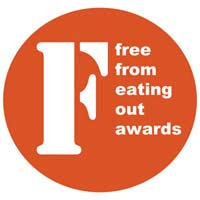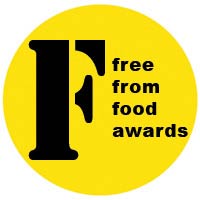
Like many families where one or more people have coeliac disease, we only eat out at a place where Coeliac Daughter can safely eat—and ideally, at a place where she can have a choice. When we have had to eat out (when travelling, for example), for years her only option has, typically, been a baked potato.
Things are getting a lot better now. A lot!
But there is still a way to go—and it seems that many caterers are still missing out on a big opportunity. The Free From market is big, and getting bigger. According to Mintel (2015), nearly 40% of the UK population avoid at least one food on a regular basis; 3 million of those are people who suffer from serious food allergies, 650,000 with coeliac disease, and up to 7 million who suffer from other food-related problems.
By failing to provide food that one member of a family of five (like ours) can eat, a restaurant misses out on selling a meal for five. And once we’ve found somewhere that caters for Coeliac Daughter, we are very, very loyal customers, and tell as many people as we can about a good experience.
So the opportunity is in fact even bigger than the statistics indicate… If you’re in the food service industry, you’ll want to make sure you can serve this group of people.
Michelle Berriedale-Johnson, who runs FoodsMatter and the FreeFrom Food Awards, has used her experience as a caterer and food manufacturer to write The Allergy Catering Manual designed to help the food service industry reach this market.
I’ve read a preview copy of this book; it will be essential reading for people in the food service industry, but also extremely valuable for those of us who cook at home for friends and family with allergies and intolerances.
- It explains clearly the difference between food allergies and food intolerances; the law covering the 14 major allergens; and the problems of accidental contamination.
- There is a chapter that discusses each major allergen (and some others) in detail, and where you might find them unexpectedly—they aren’t always called by the same names!
- And there are some clear guidelines about the issues involved in each of the key areas: menu design; recipe design; front of house; ordering and storing food; and preparing and cooking food. All establishments should read this to ensure that their processes and procedures are well-formed—and their staff well-informed and trained.
- And finally there’s a section on using alternative ingredients and products, and a useful resources section at the end, including information on training courses for managing allergy in food service.
All in all, I think the Allergy Catering Manual will prove invaluable. It’s written clearly and as simply as possible, and is full of useful information. It would make a great addition to the reading list for food technology students from GCSE up—I’ve certainly seen enough questions from young people studying food technology to know that there’s a demand for this kind of material.
And from our point of view—the consumers—the more people that have an understanding of the issues involved in managing allergies and intolerances the easier life will be!
If you’re interested in buying a copy, the The Allergy Catering Manual is available via Amazon’s Kindle Direct Publishing (KDP), priced at £3.99 until 21st May 2016 (usual price, £5.99).
 |
I’ve written a book summarising what we’ve learnt over 20 years of dealing with the gluten free diet, and it might be just what you’re looking for. It packs the lessons we’ve learned into what I hope is a helpful and straightforward guidebook. It’s available on Amazon, as a paperback or for your Kindle… |



